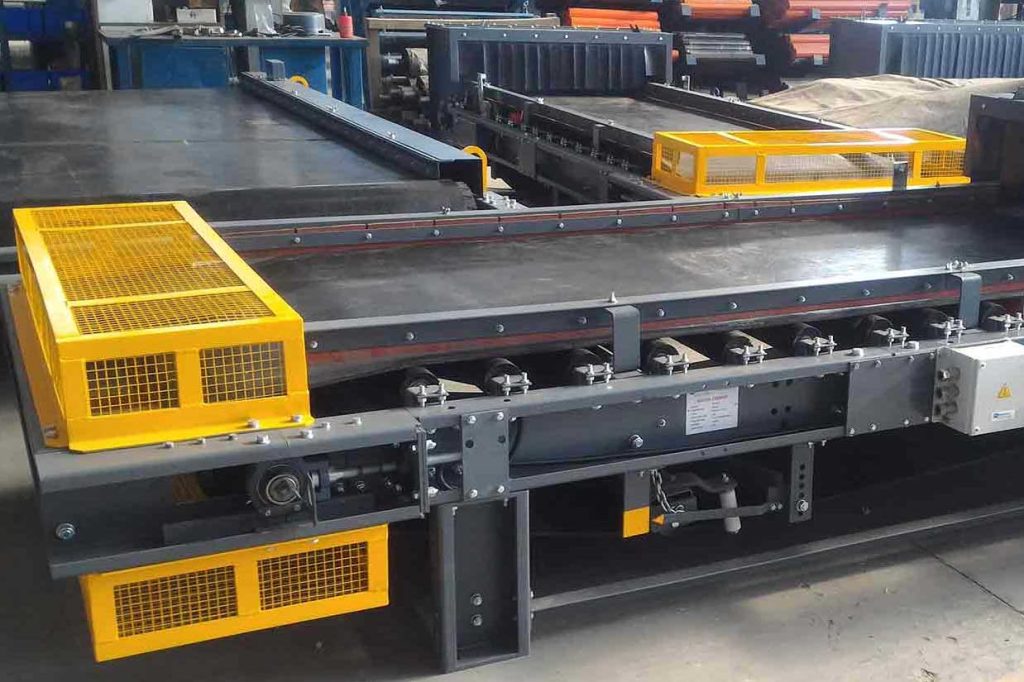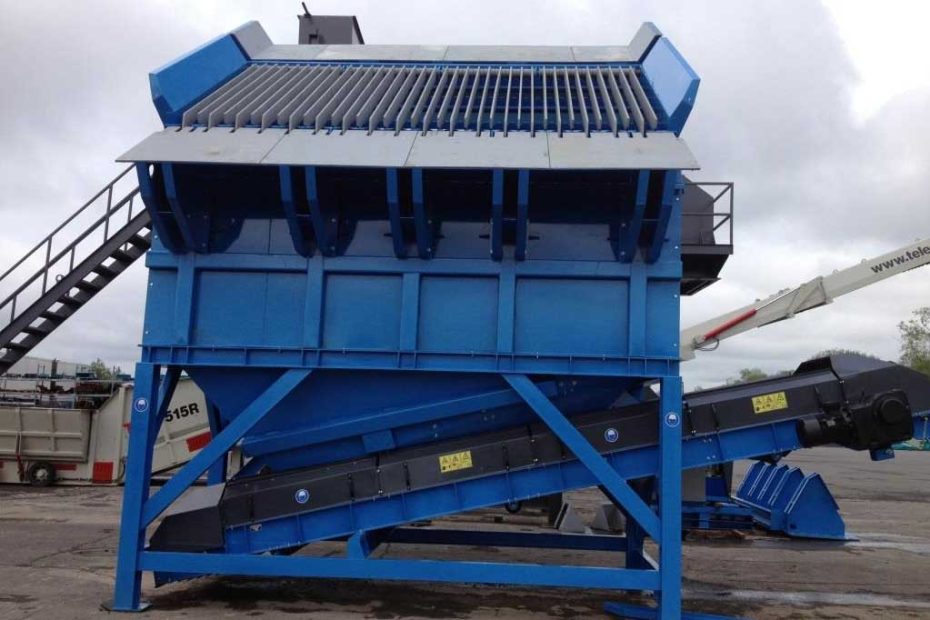Belt Feeders
A belt feeder can be incorporated into a conveyor to introduce material to the system at a controlled rate from a bin or hopper. This allows for a consistent feed rate from an otherwise uncontrolled feeding source.
Belt feeders bring precision control to material feed rate in nearly any operation handling bulk solids, but they require a few special considerations to achieve a lasting, efficient feeder. A belt feeder uses a moving belt supported by idlers and is very useful when handling sticky or fibrous materials or for controlling flow from large, slotted hopper outlets when handling cohesive materials. A belt feeder is not recommended when handling fine powders or fluidizable materials.
Several factors influence belt feeder operation and reliability:

Read More: Belt Feeders- Best Buyer’s Guide 2023
Factor 1#: Head load
- Head load is the single most important factor in belt feeder design. The head load is the amount of pressure put on the belt directly under the hopper opening as a result of the weight of the material resting on the belt. The head load is determined by the material’s bulk density, in combination with the hopper dimensions and configuration.
- In addition to defining the level of structural support required, the head load is used to determine the amount of horsepower required to move the belt. The greater the head load, the more horsepower required, and the larger the motor and associated components must be.
- If a conveyor were undersized for the head load, the feeder would not run, because the motor would over-amp and stall out. Oversizing a belt feeder might seem like a better option, but is inefficient and consumes more energy than is necessary.
- Because a greater head load requires the use of more robust components, thereby increasing the capital expense, it is often desirable to try to minimize the head load on the conveyor.
Head load can be reduced in three different ways
- Add a structural member to the hopper interior
A steel structural member, sometimes called a “top hat,” can be added to the interior of the hopper to take some of the material weight off of the belt, reducing the head load. - Use an angled hopper
When replacing a straight-edge hopper, the edges of an angled hopper can assist in supporting the material load, reducing the burden of weight on the belt conveyor. - Use a smaller hopper
Since the head load is largely determined by the hopper dimensions, by reducing the size of the hopper opening (and/or the height of the hopper), the head load is thereby also reduced. Belt speed can then be increased to achieve the same capacity.
By decreasing the head load, a lower horsepower and lighter-duty components can be used, lowering the cost of the unit while still achieving the same capacity.
Factor 2#: Skirting
While feed rate is primarily a result of belt speed and slide gate height, skirt boards, or skirting, can be used to increase the feed rate capacity.
Skirt boards serve to contain material on the belt by providing additional structure for material to rest against. This often allows operators to “over fill” the conveyor and reach a higher capacity. However, this must be carried out with caution, as the next conveyor must also be capable of handling the load, and since it is not cost-effective to fully skirt long conveyor spans, the conveyor following the belt feeder is typically not skirted and will not be able to contain as much material, though the increased speed of this conveyor helps to make up for this.
Factor 3#: VFDS
Since belt speed is a primary factor in adjusting feeder flow rate, a variable frequency drive, or VFD, is an essential component of the belt feeder.
The VFD allows operators to adjust belt speed in response to changing particle size or fluctuations in capacity during startup or shutdown. Were a VFD not utilized, operators would have no control over belt speed and would be limited in their adjustments by the strike-off plate, which itself is limited by the maximum allowable height adjustment.
Factor 4#: Belt Scale
The conveyor following the belt feeder commonly employs a belt scale. A belt scale weighs the material on the conveyor in order to confirm the desired feed rate.
Belt scales are particularly useful when material is prone to flow problems such as ratholing, as it can help to indicate when a reduction in feed rate has occurred.
Works Cited: Considerations in Belt Feeder Design & Operation
